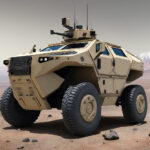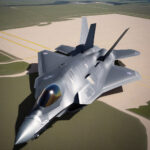Revolutionizing Space Exploration: NASA’s Ambitious Skyfall Mission to Deploy 6 Mars Helicopters
A new mission concept, Skyfall, has been revealed, proposing the deployment of six scout helicopters from a flying mothership to revolutionize Mars exploration. This groundbreaking venture by NASA signifies a remarkable leap forward in the realm of space exploration, promising to unveil unprecedented insights into the mysterious red planet.
The Skyfall mission represents a paradigm shift in the way we approach extraterrestrial exploration. By utilizing a fleet of helicopters, NASA aims to overcome the limitations of traditional rovers and landers, enabling greater mobility and access to previously inaccessible terrain on Mars. This innovative approach holds the potential to significantly enhance our understanding of the planet’s geology, climate, and potential for past or present life.
One of the key advantages of deploying helicopters on Mars is their ability to cover vast distances and reach elevated areas that are beyond the reach of conventional rovers. This mobility is crucial for exploring diverse landscapes, such as steep cliffs, deep craters, and rocky terrain, which hold valuable clues about Mars’ geological history. By accessing these hard-to-reach locations, the helicopters can collect samples and data that would otherwise remain out of reach.
Moreover, the use of multiple helicopters in the Skyfall mission offers redundancy and flexibility, mitigating the risks associated with operating in a challenging and distant environment like Mars. In the event of technical issues or obstacles, having a fleet of helicopters ensures that the mission can adapt and continue its scientific objectives, maximizing the chances of success.
The deployment of helicopters from a flying mothership adds another layer of complexity and innovation to the Skyfall mission. This approach leverages the aerodynamic advantages of flight on Mars, where the thin atmosphere presents unique challenges and opportunities for aerial exploration. By launching the helicopters from a mothership, NASA can conserve energy and extend the range of the scouts, allowing them to explore larger areas and return valuable data to the main spacecraft.
In addition to their scientific objectives, the Mars helicopters in the Skyfall mission also serve as technology demonstrators for future missions and applications. The lessons learned from operating helicopters in the Martian environment can pave the way for more advanced aerial vehicles in subsequent missions, opening up new possibilities for exploration and research beyond Mars.
As we look ahead to the realization of the Skyfall mission, the potential for groundbreaking discoveries and insights into Mars’ mysteries is truly exhilarating. NASA’s bold vision and innovative approach to space exploration are poised to reshape our understanding of the red planet and inspire future generations of scientists, engineers, and explorers to push the boundaries of what is possible in the cosmos.
In conclusion, the Skyfall mission represents a bold step forward in the exploration of Mars, harnessing the power of aerial technology to unlock new frontiers of discovery. By deploying a fleet of helicopters from a flying mothership, NASA is poised to revolutionize our understanding of the red planet and pave the way for future missions to explore the cosmos beyond. The sky is no longer the limit – it’s just the beginning.
NASA, Mars, SpaceExploration, SkyfallMission, HelicopterDeployment












